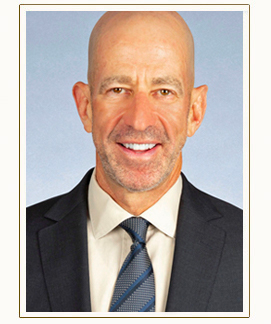By Lou Giampa, President, Right at Home Westchester
If you were a European warrior or religious pilgrim on the way to Jerusalem during the Middle Ages, chances are you lodged at a “hospes house” on the arduous journey. The holy orders of knights such as the Hospitallers and Templars ran these travel lodges named after the Latin word that means both “guest” and “host.” Over time, hospes houses expanded to offer care for the sick and dying. Derived from “hospes,” our modern-day word “hospice” is known as a place for the dying or the practice of end-of-life care. 
Part of hospice services may include palliative care, the medical specialty of alleviating pain and improving the quality of life of the seriously ill. Hospice care begins after health treatment for an illness has stopped and the patient is considered terminal. Palliative care can begin as soon as a patient is diagnosed with a serious illness and can continue while the individual pursues a cure. November is National Hospice and Palliative Care Month to help raise awareness of the skilled, compassionate care that both disciplines offer. The campaign’s 2017 theme is “It’s About How You Live.”
How Does Hospice and Palliative Care Work?
Hospice providers alone care for more than 1.6 million Americans and their families annually. While hospice does involve caring for the terminally ill, hospice care is more than seeing someone through their final days. An integrated team of healthcare professionals and trained volunteers work together to manage pain, control symptoms, and bolster emotional and spiritual needs. Hospice teams ensure patients and their loved ones find support, respect and dignity along the difficult path of a life-limiting illness.
Interdisciplinary palliative care teams are typically comprised of doctors, nurses, social workers, chaplains, and physical and occupational therapists who assist with the pain of cancer, kidney failure, chronic obstructive pulmonary disease, congestive heart failure and other chronic diseases or disorders.
“Hospice and palliative care are a vital means of comfort and support but are not synonymous,” said Lou Giampa, President of Right at Home Westchester. “Palliative care offers a holistic approach to helping reduce the suffering of anyone with a serious, chronic or life-threatening illness, not just those who are dying. As death draws near, palliative care often segues into hospice.”
Hospice serves those with a terminal diagnosis in their homes or at freestanding hospice centers, nursing homes, in-patient care facilities and hospitals. Hospice teams primarily serve in a patient’s home because most end-of-life individuals prefer to pass in their own home surroundings. Hospice care is available to any patient of any age, race, religion or illness. The National Hospice and Palliative Care Organization notes that hospice services “focus on caring, not curing” and “hospice is not ‘giving up,’ nor is it a form of euthanasia or physician-assisted suicide.” Instead, hospice care helps patients and their families embrace life as fully as possible. In some cases, hospice patients rally to make a full recovery.
Who Qualifies for Hospice and Palliative Care?
Most Medicaid, Medicare and private health insurance plans cover palliative and hospice services. Hospice care covered by Medicare requires that a person receive a prognosis of living six months or less, but there is not a six-month limit on hospice care services. A patient with a doctor’s certification of terminal illness may receive hospice support for as long as necessary.
Any person with a serious illness can benefit from palliative support, which emphasizes the quality of life for the whole person including one’s relationships. Palliative care may include educating family members and caregivers on the patient’s illness, treatment plans and medications. Palliative services ease the symptoms or side effects of an illness including:
- Pain
- Sleep difficulty
- Nausea
- Shortness of breath
- Lack of appetite
- Fear and anxiety
- Depression and hopelessness
“The majority of U.S. medical schools now offer hospice and palliative care programs and are instructing medical students in these specialized branches of pain management and end-of-life care,” explained Giampa. “It is important to work alongside a care client to develop and tailor a care plan and strategy that meets their own goals, values and needs. Our Right at Home caregivers support a range of hospice and palliative services for everyday needs, such as personal care, meal preparation and light housekeeping. Hospice and palliative medicine means skilled, compassionate teams working together for the good of the care client and the family.”
For more information about person-centered care or cognitive support, visit the local Right at Home office at www.westchesterseniorcare.com.
Learn more about elder law, estate planning and special needs planning at littmankrooks.com, elderlawnewyork.com & specialneedsnewyork.com. Have questions about this article? Contact us.
Was this article of interest to you? If so, please LIKE our Facebook Page by clicking here.




 Advance directives, such as a Health Care Proxy and Power of Attorney will benefit any adult, as accidents and emergencies cannot be predicted, and do not discriminate by age. By having a Health Care Proxy in place, a person can dictate who will make decisions on their behalf in the event they can no longer make them on their own. In addition, a thoughtfully drafted living will can assist the appointed agent in making the choices that a person would want made, including what kind of end-of-life care they would want to be given or withheld. Another document that becomes tremendously important in the event of incapacity is a durable power of attorney, which allows the appointed agent to manage the principal’s finances.
Advance directives, such as a Health Care Proxy and Power of Attorney will benefit any adult, as accidents and emergencies cannot be predicted, and do not discriminate by age. By having a Health Care Proxy in place, a person can dictate who will make decisions on their behalf in the event they can no longer make them on their own. In addition, a thoughtfully drafted living will can assist the appointed agent in making the choices that a person would want made, including what kind of end-of-life care they would want to be given or withheld. Another document that becomes tremendously important in the event of incapacity is a durable power of attorney, which allows the appointed agent to manage the principal’s finances.
 People with disabilities say that cuts to Medicaid would be devastating, likely resulting in reduced access to home and community-based services that allow many to live independently rather than in institutions.
People with disabilities say that cuts to Medicaid would be devastating, likely resulting in reduced access to home and community-based services that allow many to live independently rather than in institutions.
 Long-term care plans are another possible complication. The potential cost of care in a skilled nursing facility can be difficult to plan for, since it cannot be predicted, and if it is necessary, the cost can be enormous. While some seniors may have long-term care insurance or have the means to pay for the care themselves, others will rely on Medicaid. People contemplating marriage late in life should know that the Medicaid agency will examine the finances of both spouses to determine eligibility. The non-institutionalized or “community” spouse may sign a spousal refusal, but this does not completely relieve them of liability for the cost of care.
Long-term care plans are another possible complication. The potential cost of care in a skilled nursing facility can be difficult to plan for, since it cannot be predicted, and if it is necessary, the cost can be enormous. While some seniors may have long-term care insurance or have the means to pay for the care themselves, others will rely on Medicaid. People contemplating marriage late in life should know that the Medicaid agency will examine the finances of both spouses to determine eligibility. The non-institutionalized or “community” spouse may sign a spousal refusal, but this does not completely relieve them of liability for the cost of care. The Centers for Medicare and Medicaid Services (CMS), part of the Health and Human Services Department, issued a rule preventing nursing homes from requiring that residents resolve disputes in arbitration rather than through a lawsuit. The rule applies to all facilities that receive federal funding, protecting the rights of 1.5 million residents. The arbitration ban is one of several new nursing home regulations promulgated by CMS, including new standards for nutrition and infection control.
The Centers for Medicare and Medicaid Services (CMS), part of the Health and Human Services Department, issued a rule preventing nursing homes from requiring that residents resolve disputes in arbitration rather than through a lawsuit. The rule applies to all facilities that receive federal funding, protecting the rights of 1.5 million residents. The arbitration ban is one of several new nursing home regulations promulgated by CMS, including new standards for nutrition and infection control. If you have countable resources above the limits, you may be told that you need to “spend down” your assets, paying for nursing home care yourself, until you reach the resource limits, at which point Medicaid begins covering the cost. This is what happens in many cases. In other cases, a family may anticipate the need for long-term care and wish to transfer assets to the next generation ahead of time, in order to preserve the family’s resources while still qualifying for Medicaid. This is an excellent strategy, as long as the Medicaid rules are followed.
If you have countable resources above the limits, you may be told that you need to “spend down” your assets, paying for nursing home care yourself, until you reach the resource limits, at which point Medicaid begins covering the cost. This is what happens in many cases. In other cases, a family may anticipate the need for long-term care and wish to transfer assets to the next generation ahead of time, in order to preserve the family’s resources while still qualifying for Medicaid. This is an excellent strategy, as long as the Medicaid rules are followed. is covered, and you may want to look for a better deal. Here are some things to look for:
is covered, and you may want to look for a better deal. Here are some things to look for: